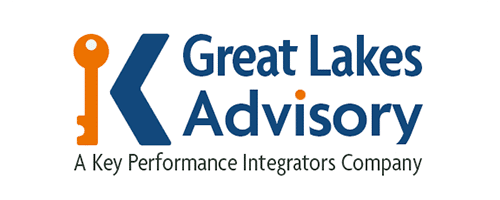Our brains are wired to process visual content much quicker than text. That’s why it’s considerably easier for you to recall information that includes a picture than information that only contains the text. Incorporating visualization into your organization’s process documentation has many benefits and can help your team to improve communication across departments, improve and streamline processes and more easily diagnose problem areas. In this article, we will discuss ways to improve process visualization so that your documentation is effective and relevant.
Benefits of Process Visualization
As part of our process management consulting services, we feel that process visualization is crucial because it not only helps you to learn processes, but it also allows you to analyze, improve upon and standardize them as well. Let’s take a look at some more benefits of process visualization.
Bringing Everybody Together
Creating a process visualization is not a solo job. It takes everyone involved in a process to come together and share their specific insights and perspectives. Everyone can then understand how their work affects others and fits into the overall process. Morale will get a boost and team members will feel like they are contributing in a meaningful way.
Effectively Communicating Insights
By seeing the big picture team members gain insight into how things are done in the organization and how their job fits into that picture. This allows them to make better decisions and proactively look for ways to improve upon processes.
Simplifying the Complex
Process visualization gives you an arial view, taking a complex process and simplifying it so that it is easier to understand. This helps you to identify and fix problem areas that you otherwise might not have been aware of.
Documenting Best Practices
When you create visualizations, processes within your organization become streamlined and perfected, allowing that information to spread to all team members. This is also helpful for new hires who are learning their roles and understanding how they fit into the process.
Boosting Organization and Efficiency
When using process visualization your organization will be more organized and efficient because best practices will be documented, and processes streamlined.
11 Ways to Improve Visualization
Each process visualization you utilize will have a different focus, but the end goal should be to improve the user’s experience by producing a document that is easy to read and understand. Contact us today to see how we can help you achieve that goal, and in the meantime, check out these tips to get started.
#1 Clear Objectives
Having clear objectives is crucial to understanding the data visualization process flow. Think about what you are wanting to achieve and who you are trying to reach. Are you wanting to boost manufacturing productivity, improve the performance of employees, or identify certain customer behaviors? Having clear-cut goals and objectives will guide the visualization process and help to measure its impact on performance data.
#2 Know Your Audience
When beginning the process of visualization, it is important to know the background of the intended audience and what their role is in the process. Think about their needs and perspectives — are they leaders in the organization who rely on the big picture to develop strategies? Are they managers who depend on the details to maintain efficient operations? Consider whether they will require additional explanation in order to interact with the visualization. Answering these questions will help to develop the visualization and ensure your audience’s needs are met.
#3 Simple Is Better
Simplicity is key when you set out to visualize a process. Overly complicated or busy visuals can be hard to read and comprehend and may result in them not being utilized. Once the process visualization has been created, take a look with fresh eyes to determine what might need to be added or taken away to ensure the visual is easy for the reader to understand.
#4 Remove Unnecessary and Redundant Information
Bigger is not necessarily better when it comes to visualizing processes. The beauty of data visualization is that the design can do the hard work of communicating the process without unnecessary copy, graphics, and design elements getting in the way. Upon completion of the visualization, take a step back and determine if any unnecessary components will hinder the user from understanding the material and focusing on what is important. Take note of things like unnecessary copy and illustrations, embellishments like drop shadows, and excessive use of color.
#5 Use Comparison
Another benefit of using visualization is the ease of comparing data that it allows. The ability to physically see two different data sets in relation to each other makes comparison quick and uncomplicated.
- Include a zero baseline if possible. Including a zero baseline on a line, the chart will give more context for comparison. Truncating the scale is helpful if you are dealing with relatively small fluctuations in data.
- Always choose the most efficient visualization. You don’t want the reader to have to work to compare lots of data. Strive for visual consistency so that data can be easily compared — use a line chart, stacked bar chart, or a grouped bar chart.
- Watch your placement. Having two grouped bar charts is only helpful to the reader if they are placed correctly. Make sure they are placed close enough together to easily compare.
- Tell the whole story. Look at the big picture when making comparisons. Productivity may have increased by 40% in Q4, but an increase of 80% since Q1 is even more notable.
#6 Sign Data
Numbers aren’t the only way to make the data speak. Using copy alongside the data will help to give context and make your point clear.
- Don’t over-explain. There is no need to repeat information in a chart header, subhead, or callout that is already included in the copy.
- Keep chart and graph headers simple and to the point. The descriptive text above the chart should achieve the goal of allowing the reader to quickly understand the data. Lose the wordiness, clever lingo, and puns.
- Use callouts wisely. Callouts should be used to provide additional context and highlight important points, not to fill space.
- Don’t use distracting fonts or elements. Bold or italic text can go a long way in emphasizing a point — just don’t use them both at the same time.
#7 Use Color
Color can be a great way to make your visualization pop, but it can also be negative if it is a distraction to the reader.
- Use a single color to represent the same type of data. Showing sales month by month on a bar graph only needs one color but comparing last month’s sales to this month’s sales in a grouped chart needs a different color for each month.
- Watch out for positive and negative numbers. Avoid using red for positive numbers or green for negative numbers. The meaning will be reversed in the viewer’s mind because those associations are strong ones.
- Make sure there is sufficient contrast between colors. It can be hard to differentiate between colors that are too similar (i.e., light gray vs. light, light gray). It’s also best to avoid using high-contrast color combinations like blue/yellow or red/green.
- Avoid patterns. Polka dots, checks, and the like can be distracting. To differentiate, use different saturations of the same color instead.
- Select colors appropriately. Some colors, like red, stand out more than others and can highlight data unnecessarily. Instead, show intensity by using a spectrum between two similar colors.
- Don’t use more than 6 colors in a single layout. Period.
#8 Add Labeling
Labels are important in interpreting data but using too many or too few can be a problem.
- Double-check that everything is labeled. Ensure that everything that needs a label has one and that none are omitted or duplicated.
- Make sure labels are visible. All labels should clearly align with the corresponding data point and be unobstructed.
- Label the lines directly. If possible, put data labels with data points so that readers can easily identify lines and their corresponding labels without having to refer to a legend.
- Don’t over the label. Only include data labels when they are needed to improve comprehension.
- Don’t set your type at an angle. Removing every other label on an axis can prevent overcrowding and allow the text to fit more easily.
#9 Indicate Ordering
The purpose of visualization is to help make sense of the data. Random patterns can make interpretation difficult and do everything but make sense.
- Order data intuitively. Categories should be ordered in a logical hierarchy — sequentially, alphabetically, or by value.
- Order consistently. Items in your legend should be ordered in the same way as the chart.
- Order evenly. Use natural increments on axes (0, 2, 4, 6, 8) instead of uneven or awkward increments (0, 4, 6, 15, 20).
#10 Use Shapes and Symbols
When creating specific types of charts and maps there are standard shapes and symbols that should be used. Some of those shapes include:
- Arrows – indicate the process flow;
- Rectangles – for activities and tasks;
- Circles or ovals – represent process start and end points;
- Diamonds – represent decisions to be made in the process.
#11 Include the Source of the Data and Link to the Original Dataset, If Possible
It is important to be upfront about your data source from the start. Know where the data you used came from, how it was collected, what was and was not used, and what conclusions you can draw from it.
Conclusion
Process visualization is crucial to improving communication among team members and refining and streamlining processes within your organization. At Great Lakes Advisory, we understand that everyone may not be a data and visual expert. That’s why we do the hard work for you so you can focus on keeping your clients happy and growing your business. Contact us today to help you start the process of visualization.


